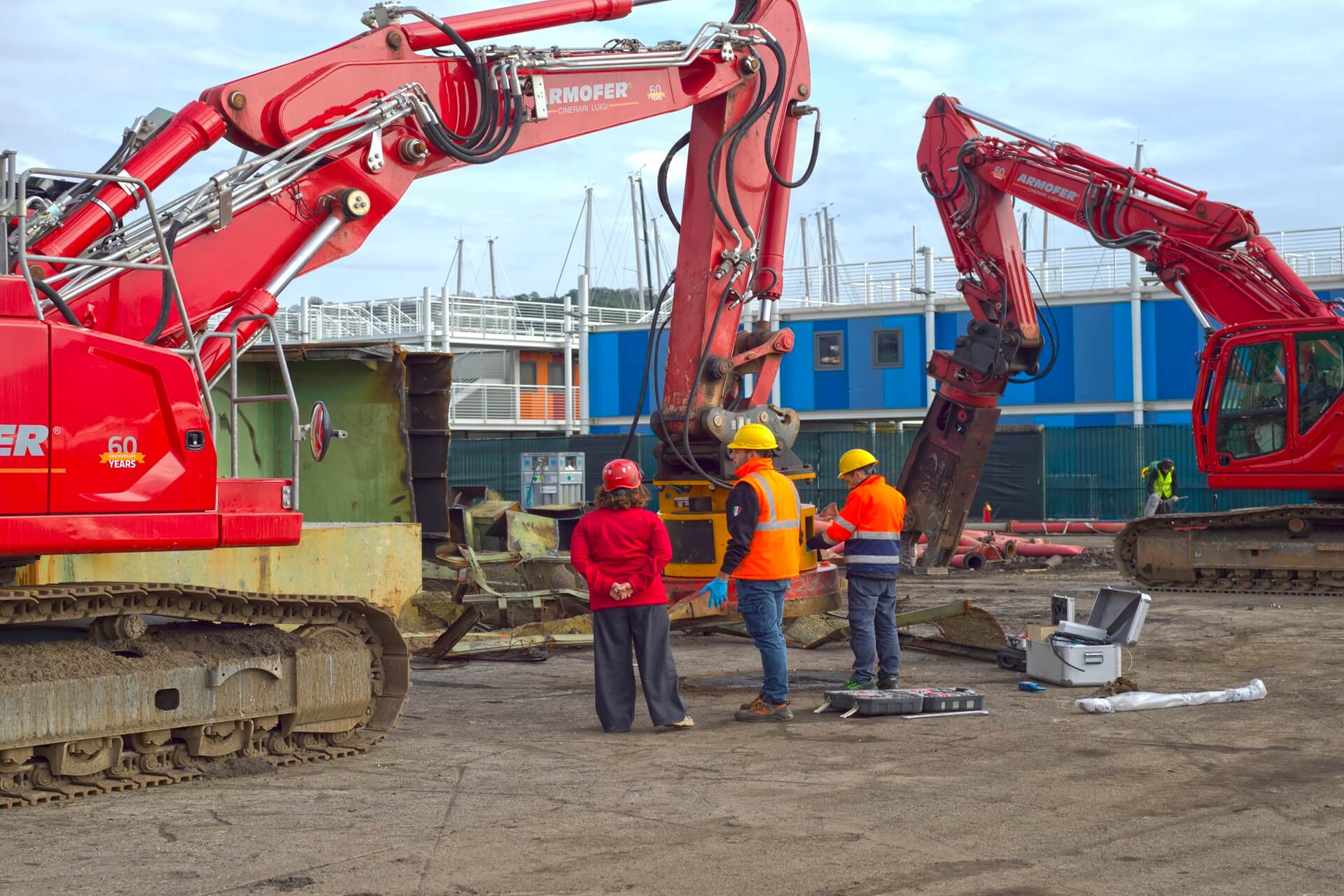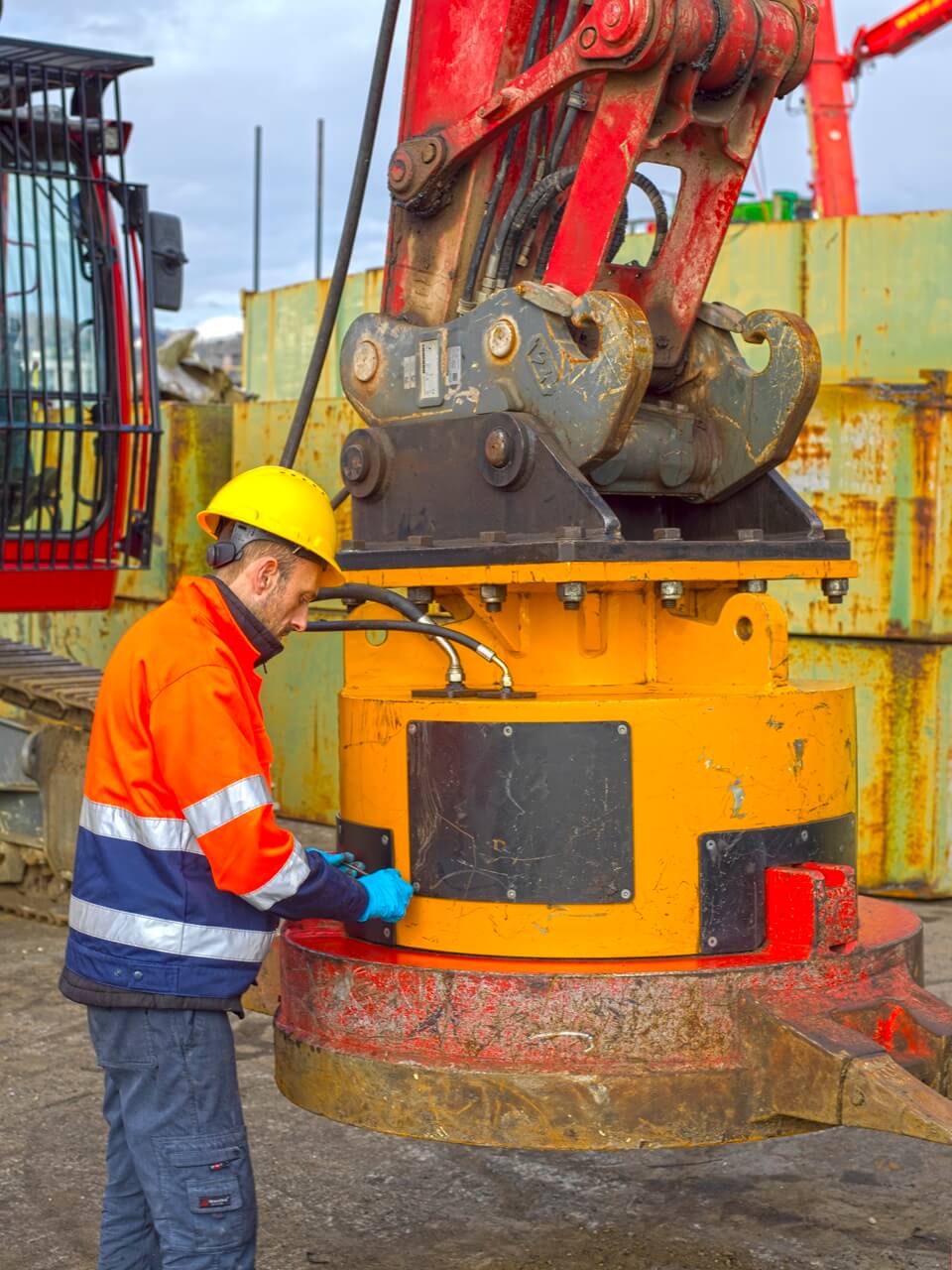How to properly install a hydraulic magnet

Installing a hydraulic magnet isn’t something you can afford to get wrong. In industrial environments, where downtime is expensive and technical mistakes can quickly escalate, precision makes the difference. This is especially true when it comes to key components like hydraulic magnets, which are used to handle ferrous materials in sectors such as demolition, recycling, heavy logistics, and steel production.
One of the main advantages of hydraulic magnets is that they don’t need electrical connections during installation, which makes the whole process easier.
This article is designed to offer a clear, practical, and up-to-date guide for anyone who works with these systems. Whether you’re fitting a new magnet to an excavator, upgrading an existing setup, or looking for a reliable supplier of electromagnets and hydraulic magnets, you’ll find here the technical advice, common pitfalls to avoid, and the best practices to follow.
Because in a field where everything has to work perfectly the first time, competence isn’t an option, but it’s a fundamental requirement.
Tools required for installing a hydraulic magnet

Installing a hydraulic electromagnet properly takes more than just a steady hand. In fact you need precise tools, technical checks, and attention to detail. The installation process is simple, you just need to follow a few key guidelines, starting from the right tools to ensure a secure and efficient connection.
The first step is accessing the main housing, which requires a set of allen keys. This allows you to open the protective cover and view the integrated voltmeter display. This step is essential for checking if the voltage output is correct. The ideal range is between 200V and 220V (a reading between 180V and 200V is acceptable, though it will slightly reduce the magnetic strength). Any reading outside these thresholds is a clear sign of a fault that must be addressed before proceeding.
When it comes to connect the hydraulic circuit, several tools are essential to ensure a leak-free and fully functional system:
- A set of wrenches, to assemble correctly the fittings of the:
- supply line,
- return line,
- drain line (if present).
To achieve a precise installation, it’s also recommended to have:
- A flow meter, to measure and compare the actual oil flow rate against the excavator or loader’s settings.
- A pressure gauge, to ensure the actual oil pressure matches the manufacturer’s operational parameters.
While these two instruments are not strictly required, they’re highly recommended in order to avoid mistakes or inefficiencies that could lead to long-term damage.
The final stage involves physically mounting the magnet into the operating machine, and here it’s important to distinguish between two specific configurations:
- Hydraulic electromagnets with bracket:
If the attachment isn’t a quick-coupler type, you’ll need:
- a heavy mallet, to drive the bracket’s pins into the corresponding holes on the excavator’s attachment.
- Hydraulic electromagnets with chain:
Installation is faster, you only need to
- hook the chain to the machine’s arm.
In both cases, it’s fundamental to check that the attachment is stable and that the magnet is properly balanced to prevent swaying or irregular movement during lifting operations.
Using the right tools isn’t just good practice. It’s the key to ensure safety, efficiency, and long-term performance. In day-to-day operations, these small details make a big difference.
Common mistakes to avoid during installation

During the installation of a hydraulic magnet, there are certain mistakes that may seem minor but can lead to costly breakdowns, reduced performance, and avoidable technical interventions over time. One of the most common errors is failing to install the drainage line when required. Often, due to haste or underestimation, this step is skipped with the assumption that “it’ll work anyway.” Actually, omitting the drainage line when it’s needed can cause pressure to build up inside the hydraulic motor that is part of the magnet’s power unit, leading to oil leaks. It’s a careless mistake that can come at a high cost, particularly in systems operating continuously or under heavy stress. On construction sites, it can become a serious safety hazard, such as an increased risk of slipping. While on truck beds, it poses a real threat. Even more critical is the potential environmental impact: a leak can contaminate soil and groundwater. This could lead to serious consequences, not only for the environment but also in terms of fines and legal liability.
Another, even more dangerous mistake is tampering with the magnet’s internal valve. This valve is factory-set to keep the entire system running smoothly. It should never be adjusted without first consulting a Zanetti Magneti specialist.
Even the slightest change in its calibration can affect how the magnet responds. It can lead to incorrect pressure levels or, worse, compromise lifting safety. In other words, adjusting this valve without precise instructions is like modifying an engine without knowing what you’re doing. For this reason, the risk is very high.
Another common issue, especially on older excavators or loaders, is assuming that the flow rates and pressure values shown on the machine are accurate. Unfortunately, that’s not always true. Over time, wear and tear or incomplete maintenance can skew these values, making the onboard computer data unreliable.
As a result, the magnet might receive too much or too little oil or pressure. This can reduce magnetic force, slow down response times, and lead to inconsistent operating cycles.
Checking flow and pressure using tools like a flow meter and a pressure gauge it’s essential for reliable performance. When you’re installing a hydraulic magnet, there’s no room for guesswork. What’s needed is precision, experience, and above all, a clear understanding. Each technical detail has an impact on system performance.
Maintenance and monitoring of hydraulic magnets over time
A hydraulic magnet isn’t something you can install and forget. To ensure reliability, consistent power, and safe operation, it needs regular monitoring. When used correctly, lifting electromagnets require minimal, non-intrusive maintenance. Just a few targeted checks are enough to prevent issues and extend the system’s working life.
The first check not to overlook is a weekly inspection. A quick but methodical glance is all it takes. Checking for oil leaks inside the magnet is essential. Even a small seepage could indicate a worn seal, a loose fitting, or, in worse cases, internal damage. It’s a simple and fast check, but it’s often underestimated. Yet it makes a real difference.
Another critical area is the bottom of the magnet, the part in direct contact with the material being moved. Mechanical wear is inevitable here, especially in harsh environments or with abrasive loads. That’s why periodic inspections based on actual usage are necessary to assess its condition.
When visible wear is present, it’s time to take action. The solution is hardfacing, carried out using a wire or electrode compatible with carbon steels. When done properly, this not only restores the surface but strengthens the magnet, preparing it for more work cycles without performance loss.
The key is to stay ahead of problems, not chase them. For those working daily on construction sites or in industrial plants, time is money. Halting production because of a poorly maintained magnet is a cost no business can afford to bear. On the other hand, regular maintenance is a solid investment in efficiency, safety, and operational continuity.
Installing a hydraulic magnet correctly is just the first step. What truly makes the difference is keeping it running efficiently over time, avoiding common mistakes, and following sound technical practices. Every inspection, every check, every preventive action adds up to greater durability and productivity for your system. And if you need a partner to support you from selection to after-sales service, Zanetti Magneti is here to help. We recommend reading this article: How to choose the right model of lifting electromagnet.
Looking for the right lifting electromagnet?
Explore our full range in the electromagnets category and find the perfect model for your operational needs.

